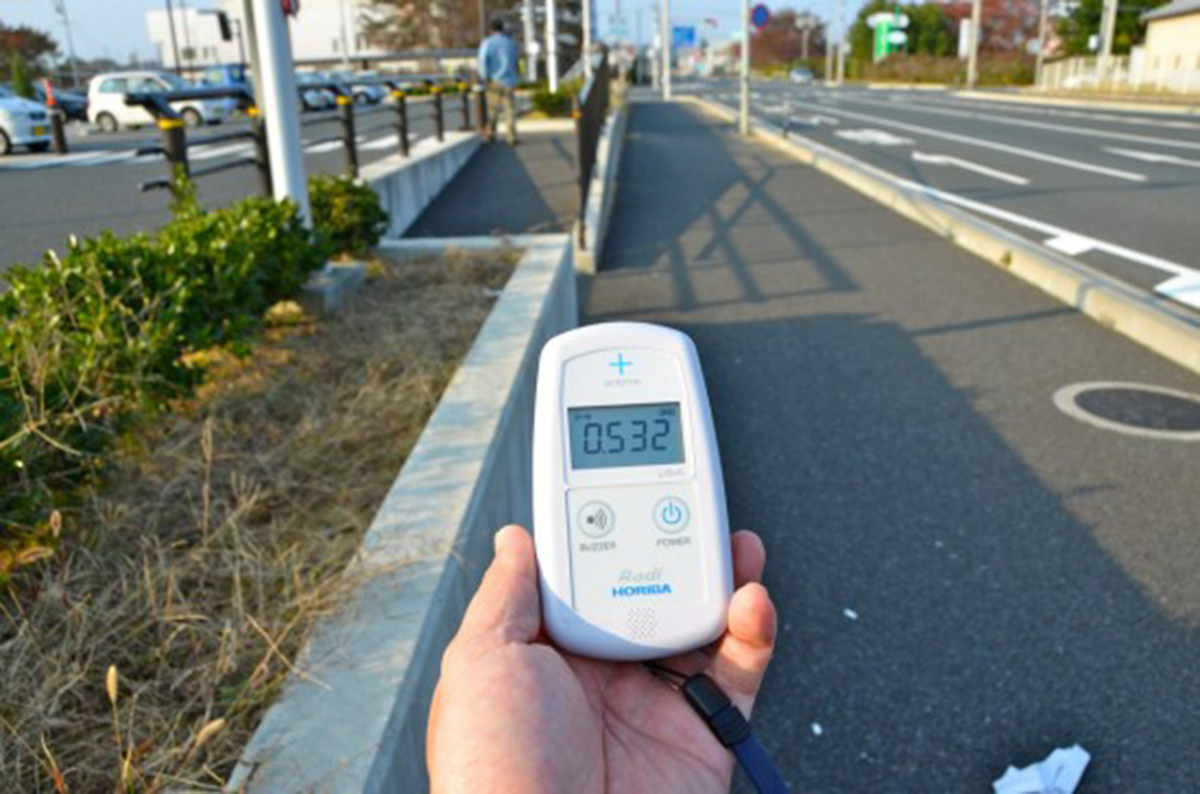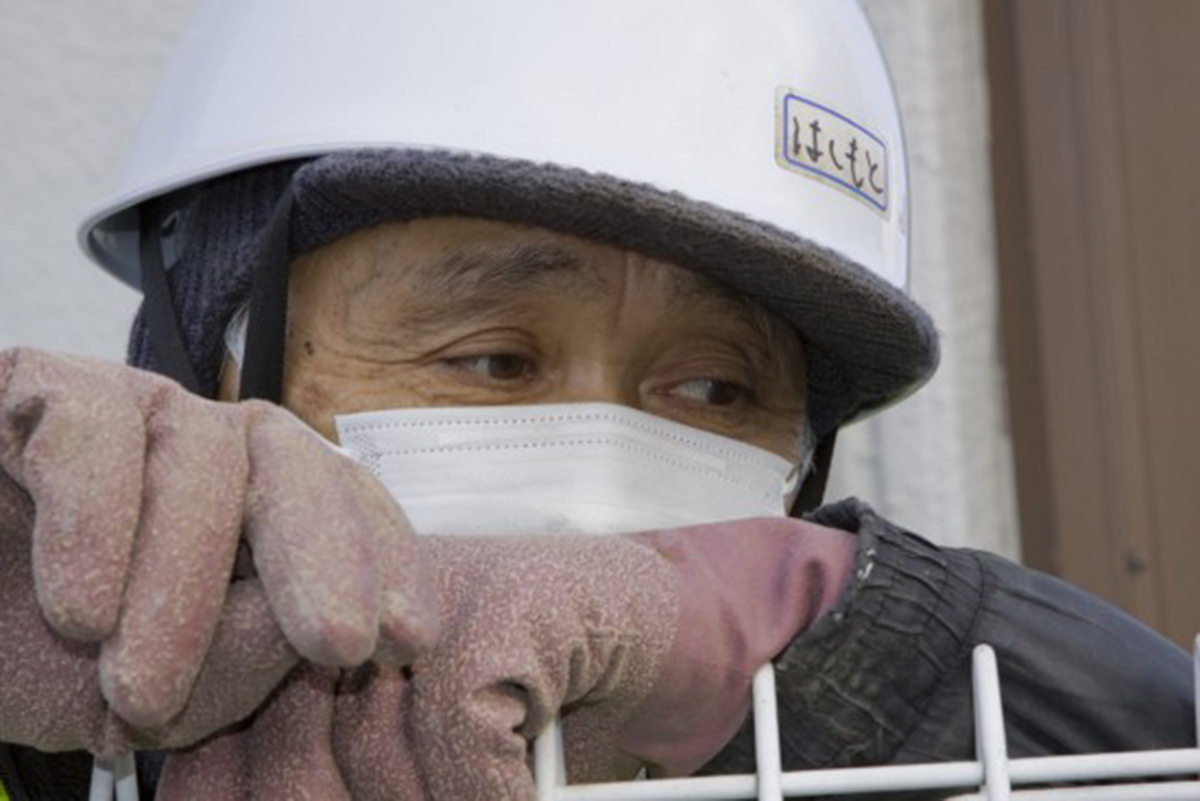Canadian environmental activist David Suzuki recently informed the world that the Japanese nuclear plant damaged by the Fukushima earthquake in 2010 is in such delicate shape that another major earthquake, 7.0 or higher on the Richter scale, could unleash a catastrophe. “The fourth [reactor] has been so badly damaged that the fear is if there’s another earthquake of a 7 or above then that building will go and all hell breaks loose,” Suzuki told a group of water ecology scientists meeting at the University of Alberta.

American Decontamination Teams Already on Site
The Japanese energy company TEPCO isn't just waiting for the inevitable end. The energy concern has accepted help from American experts to start removing the potentially dangerous fuel rods from the fourth reactor in the plant, one at a time, beginning in mid-November 2013, and probably continuing for 10 to 20 years. The problem with this process, as Suzuki and some other experts see it, is that a tiny misstep could result in a nuclear explosion.
And As If That Weren't Enough
The underwater earthquake fault that set off the catastrophic Fukushima quake in 2010 is still active, Suzuki says, and there is a 95% of a 7.0 aftershock from the main quake in the next three years.
Not Everyone Takes These Warnings at Face Value
But not everyone takes the dire warnings of Suzuki and other experts seriously. There are good reasons to be skeptical.
- The maps of radiation crossing the Pacific Ocean aren't actually maps of radiation. They are maps of waves from the tsunami the morning of the quake. At that time, radiation was not leaking into the ocean, and if if had been, it would already be the places marked on the map. To put it clearly, the map that gets posted and reposed on social media such as Facebook is a fake.
- "At the very least, your days of eating Pacific Ocean fish are over" is another common hyperbolic claim about the extent of the problem. Thyroid cancer rates are soaring, the fearmongers say, and fish are being burned. But the simple fact is, they aren't. Even fish caught in Japanese waters are not found to contain unacceptably high levels of radiation, at least not yet. It is possible that a second tsunami overwhelming the fourth reactor would change this situation, certainly for the waters off the east coast of Japan, but that has not yet happened.
- Many of the discussions confuse water-borne radiation with air-borne fallout. Fallout from nuclear testing actually has covered most of the world. But radiation leaked into water has not.
Read More: What You Need to Know About the Radiation Threat from Sendai
The dire warnings about Fukushima ignore the facts that Chernobyl, in 1986, released a great deal more radiation than has leaked from the Japanese plant. Or that testing nuclear bombs in the 1950's and 1960's released 20,000 times more radiation than the Japanese power plant.
Or that Hiroshima and Nagasaki, bombed by the Americans at the end of World War II, now host parks and wildlife and healthy people. But what should you do if the warnings turn out to be really true?
What To Do If The Alarmists Are Right
Let's suppose the dire warnings about Fukushima turn out to be objectively true.
What can we do to protect ourselves?

First, let's dismiss some really bad ideas. Late night radio promoters from time to time try to get people to buy "KI radiatiion protection kits." These heavily advertised home protection kits offer a few pennies worth of potassium iodide tables for $20 to $50, on the grounds that they "protect your family against radiation."
But Fukushima was not an above-ground atomic explosion, and you don't need protection from isotopes to which you are not exposed. Besides that, taking too much iodine can cause problems of its own. Never, ever take more than the recommended dose, even if you are directly exposed to above-ground radioactive fallout.
Then there is the Japanese company that has been selling radio-protective underwear. Unless you are swimming on the beach at Fukushima with all your clothes on, it is difficult to imagine how these could help.
But there are things you could do if the warnings turn out to be right, and there is an above-ground nuclear explosion in Japan.
- Get away from hotspots. This is perhaps not the best time to plan that retirement home on Honshu.
- Make a habit of leaving your shoes by the door, Asian-style. This prevents bringing radioactive dust from outdoors that would stay in carpets.
- Avoid fresh dairy products for 30 days after an above-ground nuclear explosion. Milk concentrates radioactive iodine, but it has a half-life of just 8 days. In 32 days, 90% of the radioactive isotopes have decayed. Radioactive decay also takes place in cheese and yogurt, so you could eat them again about the same time you could drink milk again.
- Take supplemental calcium, iron, and magnesium. These minerals get into your system ahead of radioactive strontium that may be released by an explosion.
- And most importantly of all, make sure your diet is heavy on fresh fruits and vegetables. Fresh plant foods provide antioxidants which counteract the long-term effects of low-level radiation. In fact, due to a phenomenon called the Patkau effect, the lower the level of long-term radiation, the greater the damage done to healthy cells. Berries, nuts, dried fruit, and the freshest fresh vegetables are what your body needs to protect itself from radiation over the long term. But that also applies to protecting yourself against the much greater amounts of radiation still lingering from above-ground nuclear testing 50 years ago and more.
Read More: List Of Who Recommendations On Minimizing Radiation Exposure
And even an above-ground explosion, which would be one of over 200 in recent history, would not present worldwide threats to health.
- Bouville A, Linet MS, Hatch M, Mabuchi K, Simon SL. Guidelines for Exposure Assessment in Health Risk Studies Following a Nuclear Reactor Accident. Environ Health Perspect. 2013 Nov 1.
- Simon SL, Coleman CN, Noska MA, Bowman T. RESPONSE OF THE U.S. DEPARTMENT OF HEALTH AND HUMAN SERVICES IN PROTECTING CIVILIAN AMERICANS IN JAPAN DURING THE FUKUSHIMA NUCLEAR CRISIS. Health Phys. 2012 May.102(5). doi: 10.1097/HP.0b013e31824c79e5.
- Photo courtesy of raneko by Flickr : www.flickr.com/photos/raneko/6343787046/
- Photo courtesy of GLOBAL 2000 by Flickr : www.flickr.com/photos/global2000/8284238846/


Your thoughts on this